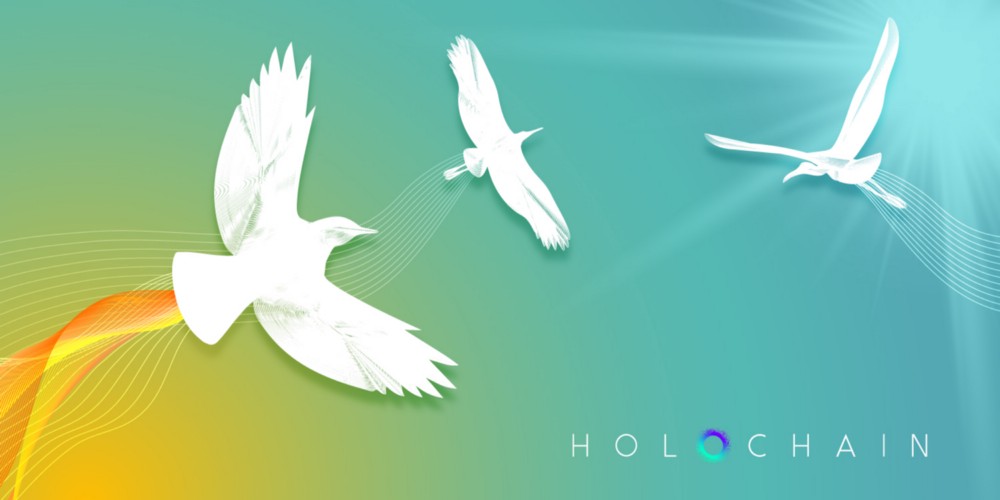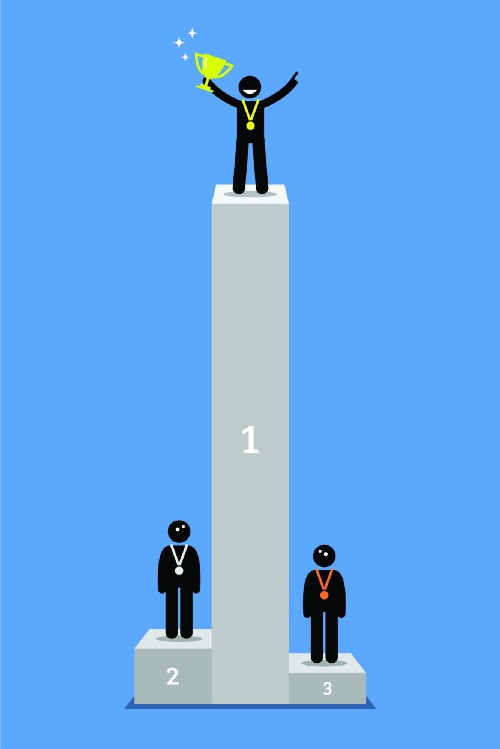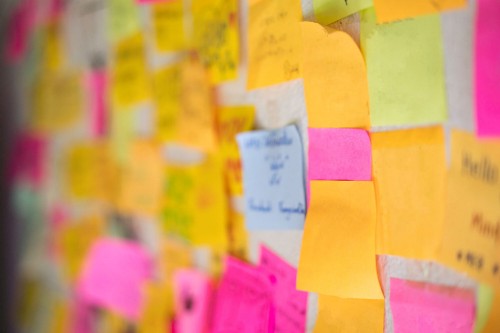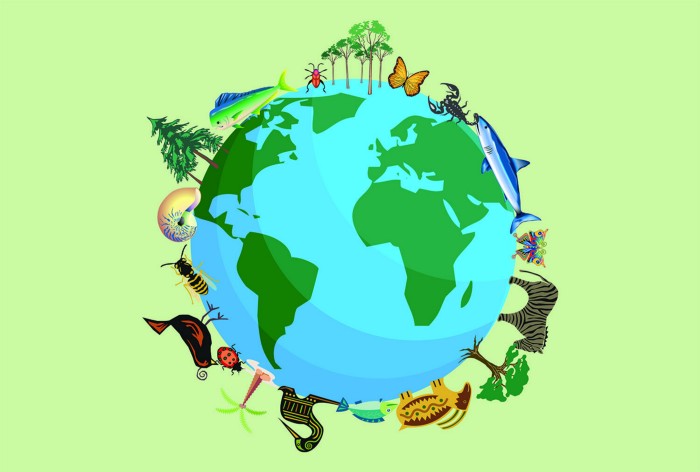Unenclosable Carriers and the Future of Communication
[Originally published on Medium]
The Nextnet Series: Part 1 of 3
In collaboration with Josh Zemel

All communication relies on one or more carriers. At the most basic level, when you’re speaking to a group of people in a room, the air is the carrier for the sound waves moving through it. You pass breath through your vocal chords and shape your mouth in funny ways, and a bunch of compression waves emerge and fill the room with information that others then decode. No one can just grab the words out of the air to stop them from reaching someone else. The carrier is unenclosable.
For the sake of contrast, let’s say your boss puts out a suggestion box, in order to give you and fellow employees the opportunity to make a difference in the workplace. Sounds nice, right? And yet, the box is enclosed; there’s no way to see how many suggestions have been made, or which ones have been discarded before even reaching the person who could implement the suggestion. The system includes a filtering mechanism that allocates some degree of control to whoever is in charge of the box. And isn’t the suggestion box system designed, in part, to enable that layer of control? If they didn’t want the ability to filter, they might have just invited suggestions openly during a meeting with everyone present.

A Brief History of Communication
Before modern technology, or really before the development of written language, communication was generally transmitted by unenclosable carrier. Oral traditions were the norm in prehistoric time, and they are preserved today in indigenous cultures around the world — cultures we often respect for their ways of reaching alignment quickly, resolving tensions directly, and treating their members with honor. (Consider our postmodern fascination with the talking stick and council of elders.) This social wisdom may be linked to the unenclosable medium of communication they used.
Where direct oral communication reaches its limits, of course, is as soon as it’s important to communicate at scale, across distance or time. Want to rally a crowd? You’ll need amplification. Want to coordinate troops in the field? You’ll need some form of written communication. Want to operate a nation or empire? You’ll need carriers of all different sorts: messengers, letters, telegraphs, whatever.
And yet, most carriers we use to extend the reach of communication also introduce the possibility of enclosure, which in turn leads to power imbalances. Writing gave rise to the literate class, the clerical class, who by virtue of privilege or position suddenly had outsize power, with access to libraries and information and the ability to make deals or even laws that others couldn’t make, or at least couldn’t understand, without the help of the literate. The printing press gave rise to the editors, publishers, and booksellers who determined which books were published or promoted. Broadcast media gave rise to the media empires who today exert preferences over what is broadcast. The ability to control the carrier results in the ability to control the message.

Covert and Overt Control
What’s actually true about oral cultures is not that control over messaging is impossible, but rather that the available control mechanisms are more overt. You can stop someone from speaking up around a fire if you physically attack them or try to shout over them. But then everyone knows you’re doing that, which means that your actions are subject to whatever social feedback mechanisms exist to temper abuses of power. So, really, what carrier enclosability gives rise to is covert power. The manager filtering the suggestion box; the allocation of FM bandwidth to someone over someone else; the private understanding between interest groups and politicians.
Awash in Enclosable Carriers
As the speed and scale of communication has increased, so have the layers of enclosable carriers on which our communication relies. In newsprint and on television, it’s the advertisers, as well as executives who are bound to the interests of boards and shareholders, who exert both apparent and hidden control over the content we receive. Our phone lines are subject to a variety of costs, controls, and oversights. Even getting on a plane (or flying one’s own) to a distant land — which is another way to communicate across distances — is highly constrained by licenses, airspaces, borders, passports, airport fees, and so on.
And of course we have the internet, which has given us a taste of radical participation and democratized access to information, but whose filters on access and information have caused increasing alarm. There are centralized entities controlling the allocation of web addresses, domain names, and root servers. ISPs have the ability to block access to the internet altogether. Facebook, YouTube, and the like decide what content is inappropriate, and, perhaps more importantly, what content appears in your feeds. Amazon determines which products you can use the convenience of its site to buy. And, of course, Google steers you to some web sites over others, according to its secret algorithms.
Our ability to coordinate activity at scale has never been greater, but that coordination is also subject to centralized control and corruption like never before — and to an unknown degree because it is largely covert. Do we have any way of knowing the extent of Russian influence on the 2016 U.S. election? We don’t. We also don’t know the degree to which our ‘real’ news is adulterated and filtered, which is part of what makes ‘fake news’ such an intractable problem: when all news is subject to corruption, it’s hard to tell the difference between legitimate and completely falsified sources.
If we want to move into an era of intelligent, mutually beneficial, worldwide coordination, we will have to address the problem of enclosability. But first, a word about money.

The Enclosability of Money
Monetary systems are special cases when it comes to enclosability and covert systems of control. We all have the capacity to produce value, but we have allowed our exchange of value to be mediated through money, which we’re not allowed to produce. (If we do, it’s called counterfeiting.) The few who are allowed to issue money use that privilege to constrain our participation in the marketplace.
In principle, a financial transaction could be as simple as two people exchanging value through a direct agreement, but in our world of enclosable carriers, transactions are controlled by many third parties that we don’t get to choose.
By way of example, let’s look at transacting through PayPal, which claims to offer peer-to-peer payments to ‘anyone with an email address’. But if you want to pay your friend for something, just consider all the layers of control you cannot opt out of:
- You must connect to the internet via a semi-monopoly of telcos/ISPs.
- The connection must supply an IP address, which is under the control of ICANN, the international body that delegates ranges of addresses to specific licensees of their choosing.
- You need to establish an HTTPS connection, which requires certificates issued by a root authority.
- Your email must be routed to and stored on an email server, which is typically not under your control.
- The email address uses a domain name, which is subject to central control via ICANN, domain registrars, root servers, and nameservers.
- You must go through the PayPal app or website, which is under their corporate control (not to mention all the aforementioned domain handlers and routers).
- Your PayPal account must be active and in good standing, at their discretion.
- You transact in a currency, whether dollars, euros, or yen, that is fundamentally out of your control. Governments can freeze accounts, limit international transactions, and garnish wages, not to mention influence the money supply in ways that affect what your currency is worth.
- You use a central payment source, such as a bank or credit card, that can reverse transactions, charge fees, block access, and close accounts.
Does that sound like peers interacting directly with each other? Or does it sound like a bunch of people got invited to your party who you’d have preferred to leave out of the mix?
But What About My Favorite Decentralist/Blockchain/dApp Project?
And so we come to the blockchain and, more broadly, the whole decentralization movement. If you’re a participant in this ecosystem, you might be thinking that blockchain-based projects or dApps, at least the ‘best’ ones, are precisely the antidote to the problem of carrier enclosability.
It’s true that blockchain applications have, in many cases at least, offered an exciting means of collaborating outside the reach of outsized government and corporate middlemen. The mechanisms for this accomplishment involve decentralized transacting, which is the ability to transact peer-to-peer, and decentralized issuance, meaning that currency is created not by a centralized authority but rather by protocols opted-into by the users. These mechanisms are laudable to a great degree.
But decentralized transactions and decentralized issuance are not equivalent to truly decentralized governance at all levels, including the mechanisms by which transactions or interactions are considered legitimate enough to be added to the shared record. The most widely-used methods of making this determination — employed by every project/dApp we’re aware of outside of those being built on Holochain — all involve some form of global state, meaning that many nodes, or computers on a given network, must agree with one another before officially adopting any information. It’s an understandable approach since it might seem like the only way to coordinate at scale without being subject to centralized authority or being susceptible to malicious acting.
The problem, though, is that global consensus mechanisms are still a form of carrier enclosure, and there are necessarily some nodes (or users) who have more say than others in determining the legitimacy of transactions and adopting updates to the rulesets.

The two most common strategies for achieving consensus about global state, proof-of-work (POW) and proof-of-stake (POS), are very much enclosable and do converge toward enclosure. Those who have more money to buy more processing power (POW) or betting stakes (POS) win more money, which then enables them to buy more processing power or betting stakes. Both algorithms centralize power over time, allowing the rich to become richer and more influential.
Another common strategy for managing global state is to reduce the number of nodes considered to be authorities about the state. EOS has 21 ‘block producers’, NEO has 7 ‘consensus nodes’, and TRON has 27 ‘super representatives’. Again, this approach fails our test of enabling you and me to transact directly because it channels us through an elite club of authorized nodes who accept (or refuse) our transaction.
And real communication enclosures can happen and have happened in blockchain projects. The Ethereum hard fork in 2016, right-minded as it may have been, was a means of invalidating transactions that had occurred. EOS has also reversed transactions, as has Bitcoin Cash.
But even these are relatively small examples compared to what can occur when you have a relatively small group of miners, stakers, developers, or you-name-its who have more power than others when it comes to saying what counts, what gets through, or what rule changes get adopted.
So, even though the very intention of many blockchain projects is to address intermediation and the centralization of power, they are actually subject to the same kinds of power imbalances we see in other mediums. It’s a tilted playing field, and even a slightly tilted playing field eventually leads to massive imbalance, just as we’ve seen play out in economies around the world over the course of the last 500 years.
So we’re back to our original question: is it possible to have a system of communicating and transacting that 1) involves truly unenclosable carriers and 2) is capable of massive scale?
Having It Both Ways
In considering how a communication system might be both scalable and unenclosable, let’s look at the evolution of language itself. How does language arise? Who gets to change the rules of language? We do. Any one of us can create a new word, turn of phrase, or other language pattern that may or may not spread based upon whether others freely adopt it. If it spreads far enough, it becomes part of a language. There is no central committee that determines what you can say or not, or what gets adopted or not.

So, our new ecosystem of communication might look something like the spaces of language itself. We can imagine a scenario in which anyone can spin up new protocols for interacting — protocols that can be voluntarily adopted by those who choose to participate in them. Everyone is free to transfer the rulesets of any given space into another space, just as anyone is free to populate an uninhabited island, start speaking any particular language there, and invent new words.
Notice this does not actually mean an absence of rules. Protocols are essential within any given space for filtering signal from noise, and to avoid the gaming of that space. The network itself needs to be censor-proof, but that doesn’t mean that everything in a voluntarily selected space should also be censor-proof.
To continue with our analogy, let’s say that on a certain island there’s a protocol that new residents introduce themselves at a weekly meeting, or post a bio on a bulletin board or profile page. Perhaps there’s also a social norm not to interrupt one another at certain meetings, and there might be corrective protocols activated if someone repeatedly violates that norm. Notice, though, that these rulesets only pertain to the particular scope of this island (which people can choose to join or not), rather than being built into the language itself or any other global ruleset.
So, one key ingredient in making any system fundamentally unenclosable is the ability for anyone to create segmented spaces of coherence into and out of which people can freely associate, with rulesets that are particular to those spaces. Wikipedia has a variety of protocols that dictate how articles are written, while Twitter restricts posts to 280 characters. The current versions of these apps are subject to all kinds of enclosures, but even unenclosable look-alikes of them could and probably should have similar rule sets. It wouldn’t make sense for someone to be able to post a tweet on Wikipedia, or an encyclopedic article on Twitter. Within the scope of each app, people are free to express themselves according to the parameters they opted into when joining the app.
It’s even possible that unenclosable versions of Twitter or Wikipedia could have some centralized control, such as moderation by individuals or groups appointed to the task. But users would have the ability to opt out of this moderated space if they didn’t like some new rule or anything else about the space. And, if the apps are to be truly unenclosable, the ability to opt out doesn’t simply mean that you have the option not to use them; it must also mean that you can easily spin up alternatives.
This leads us to another key ingredient of our unenclosable system: forkability, which means that anyone is free to leave any space, create another based on the same (or similar) source codes and rulesets, and invite people to the new version. For true forkability, users need to be able to migrate easily between versions, taking their data from one version — for example their complete activity on a social network or search engine — and load it into the new version. This is, of course, very much not the case with the likes of today’s Facebook and Google, who own and control your data, making only a fraction of it available to you.
With these ingredients in place, no one can stop two people from freely associating.

A Natural Selection
With free association and forkability in place, an evolutionary phenomenon emerges: the spaces themselves, with their patterns and protocols, enter into a process of natural selection. The ones that solve problems better or serve people better will gain greater adoption, while the ones that don’t do as good a job will die off. To return to the island analogy again: if people can move freely between islands, bringing language patterns from one to the other, the dialects that are most suitable to people’s needs will be the ones that thrive and spread.
Holochain Is Unenclosable by Design
Holochain is designed precisely to foster the kind of ecosystem we’ve been describing, with the ‘islands’ being applications that anyone can easily spin up by creating or forking code. Holochain also makes it simple to move between ‘islands’ by allowing users to control their data in such a way that it’s easy to bring along to new applications. And it’s designed to promote social coherence within app spaces by making sure everyone is playing by the same set of rules — and by creating enough transparency around how everyone is interacting to promote mutual enforcement of those rules (and therefore a strong Nash equilibrium).
We believe that by providing an unenclosable carrier for an unlimited range of applications, Holochain will enable the next internet — one that doesn’t involve corporations, governments, or surveillance systems in the middle of our communication and collaboration.
Now you can jump into the next piece in this series, where we explore the implications of an unenclosable NextNet for global systemic challenges.

Arthur Brock
holochain crypto blockchain distributed systems unenclosability
